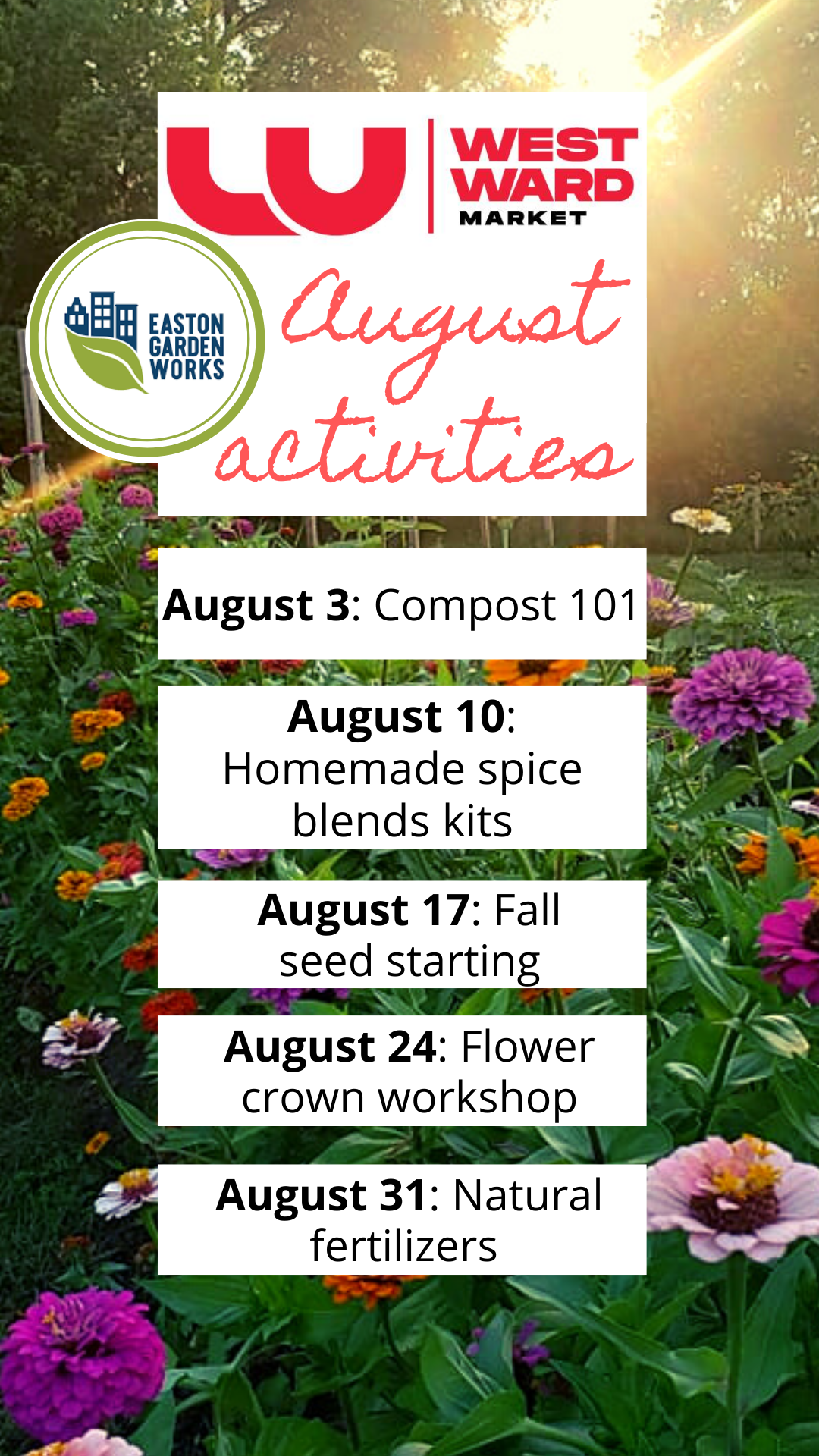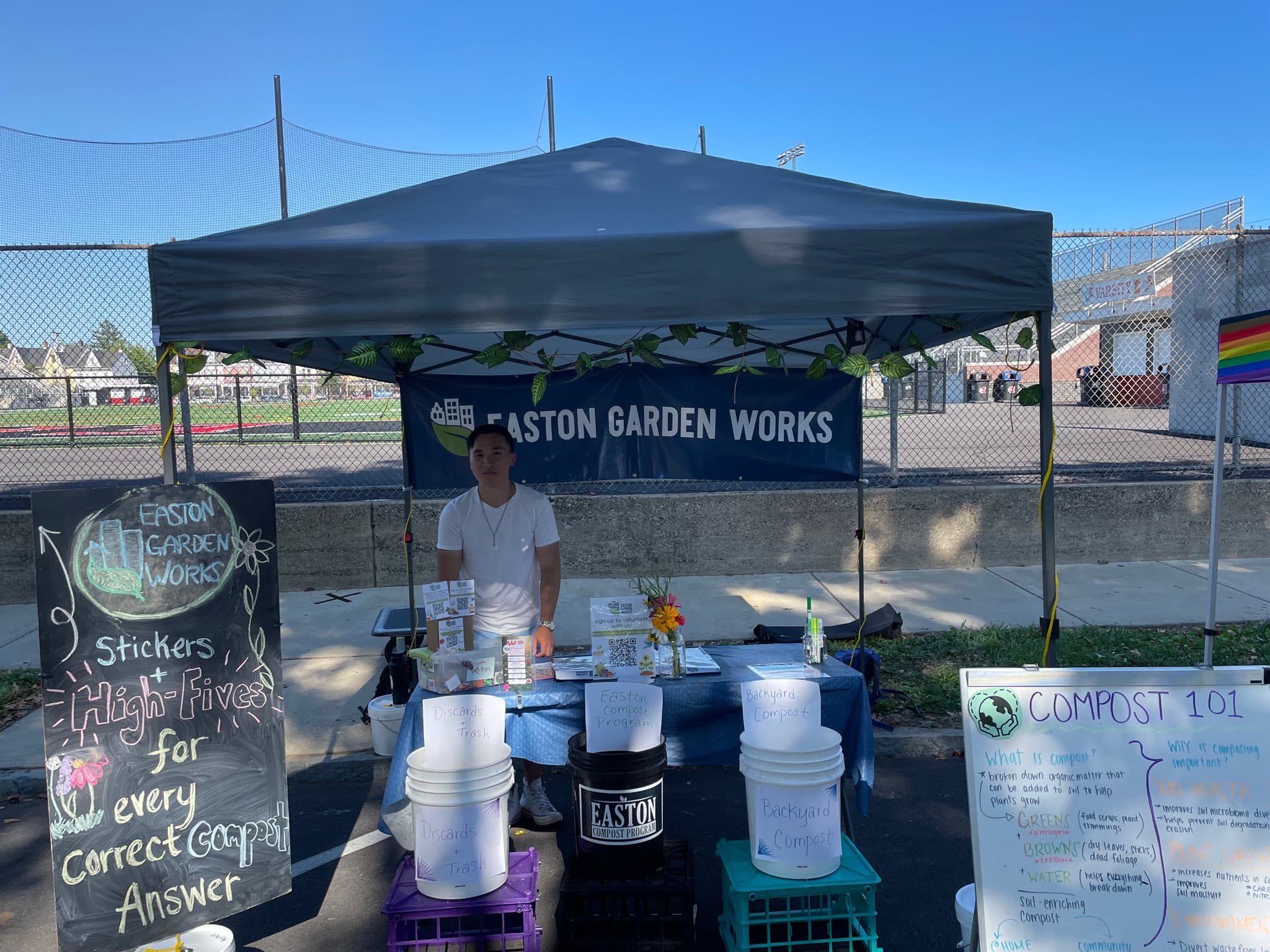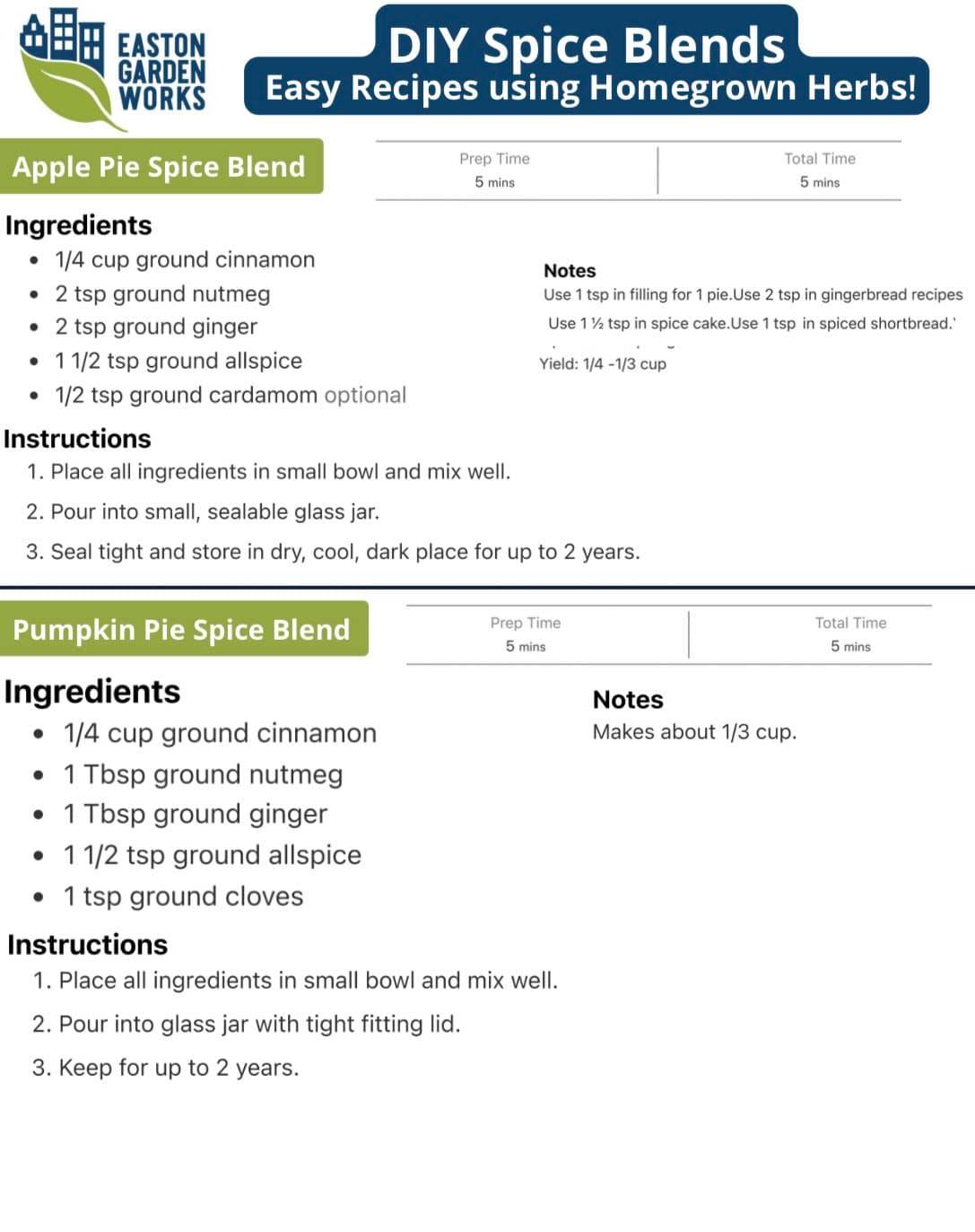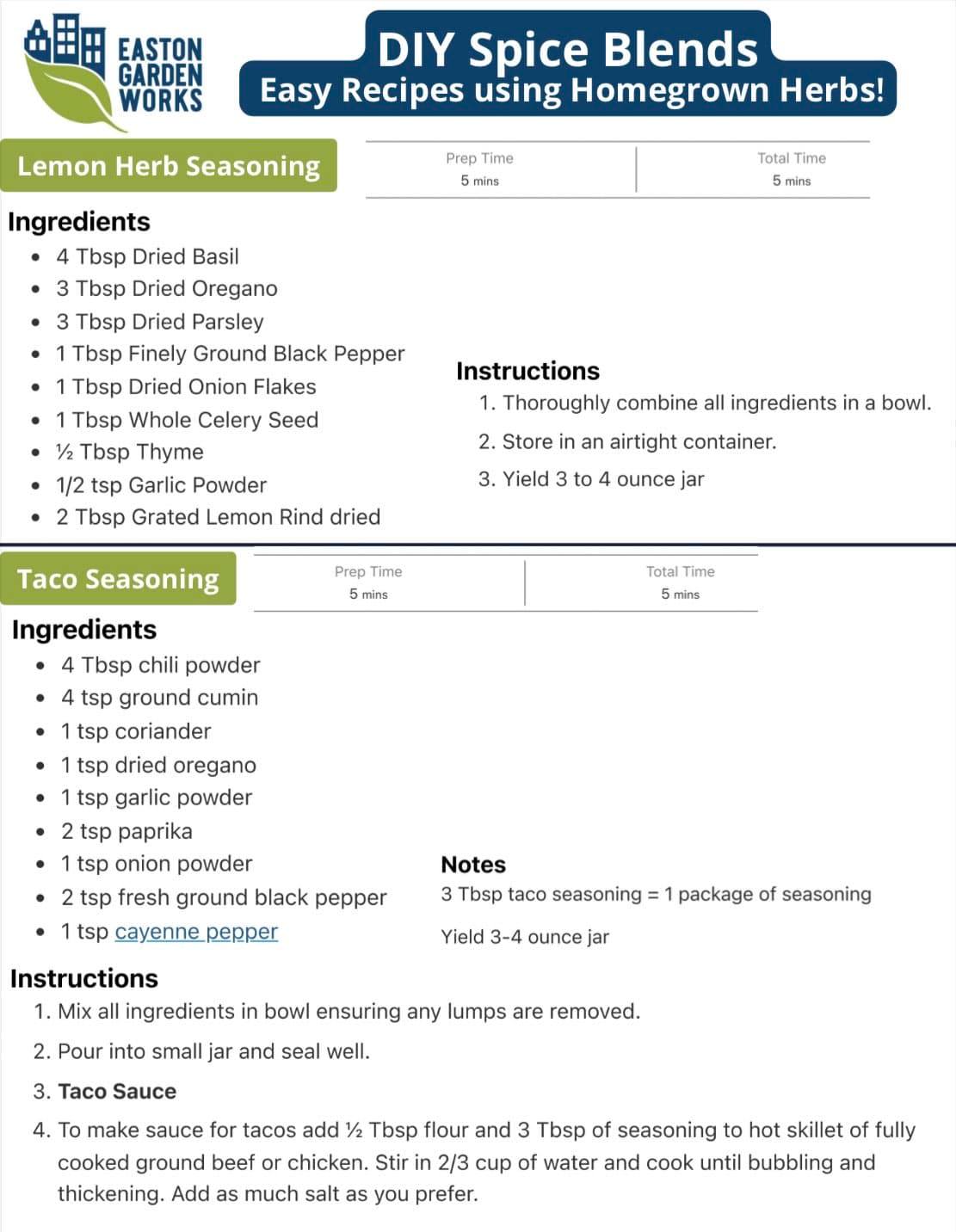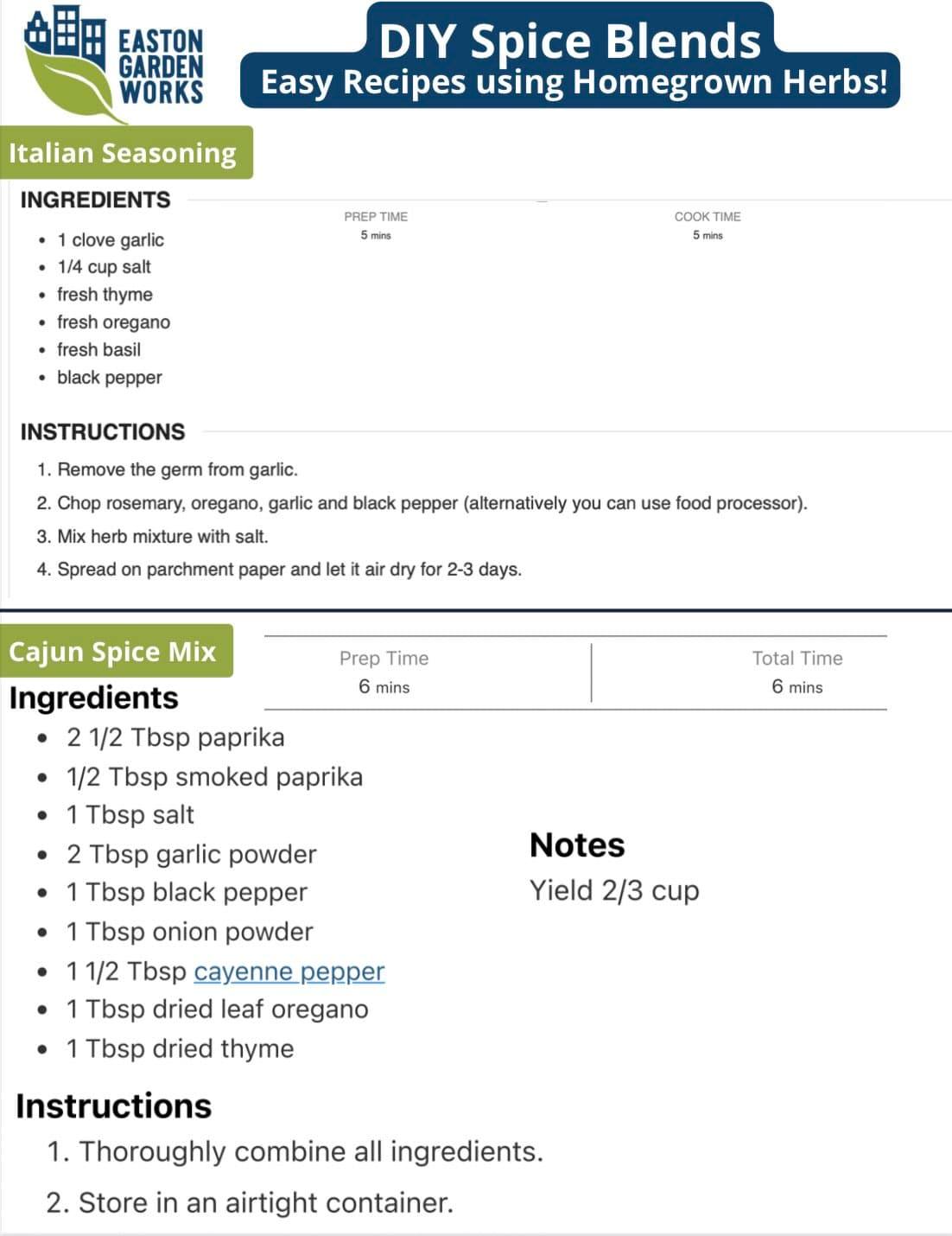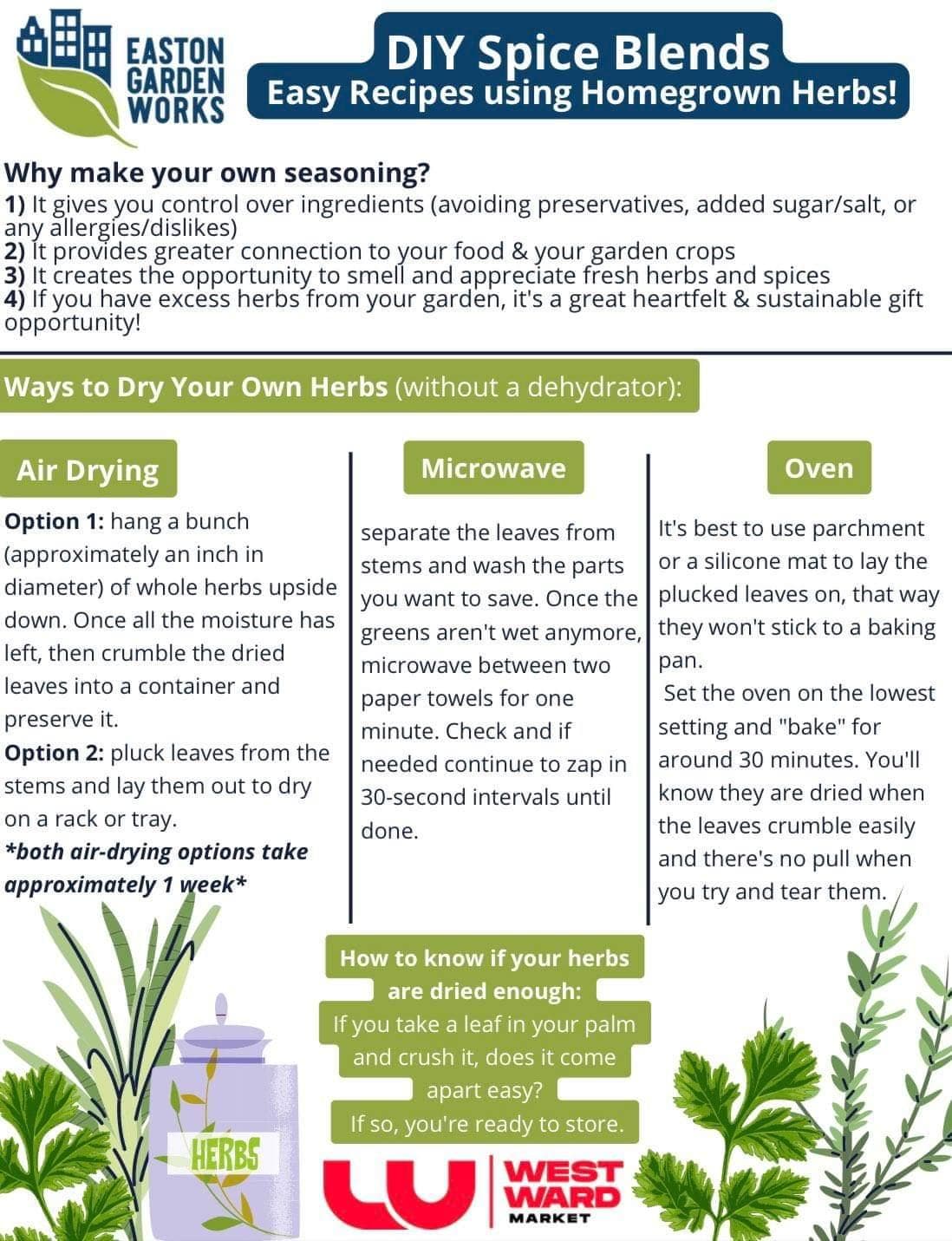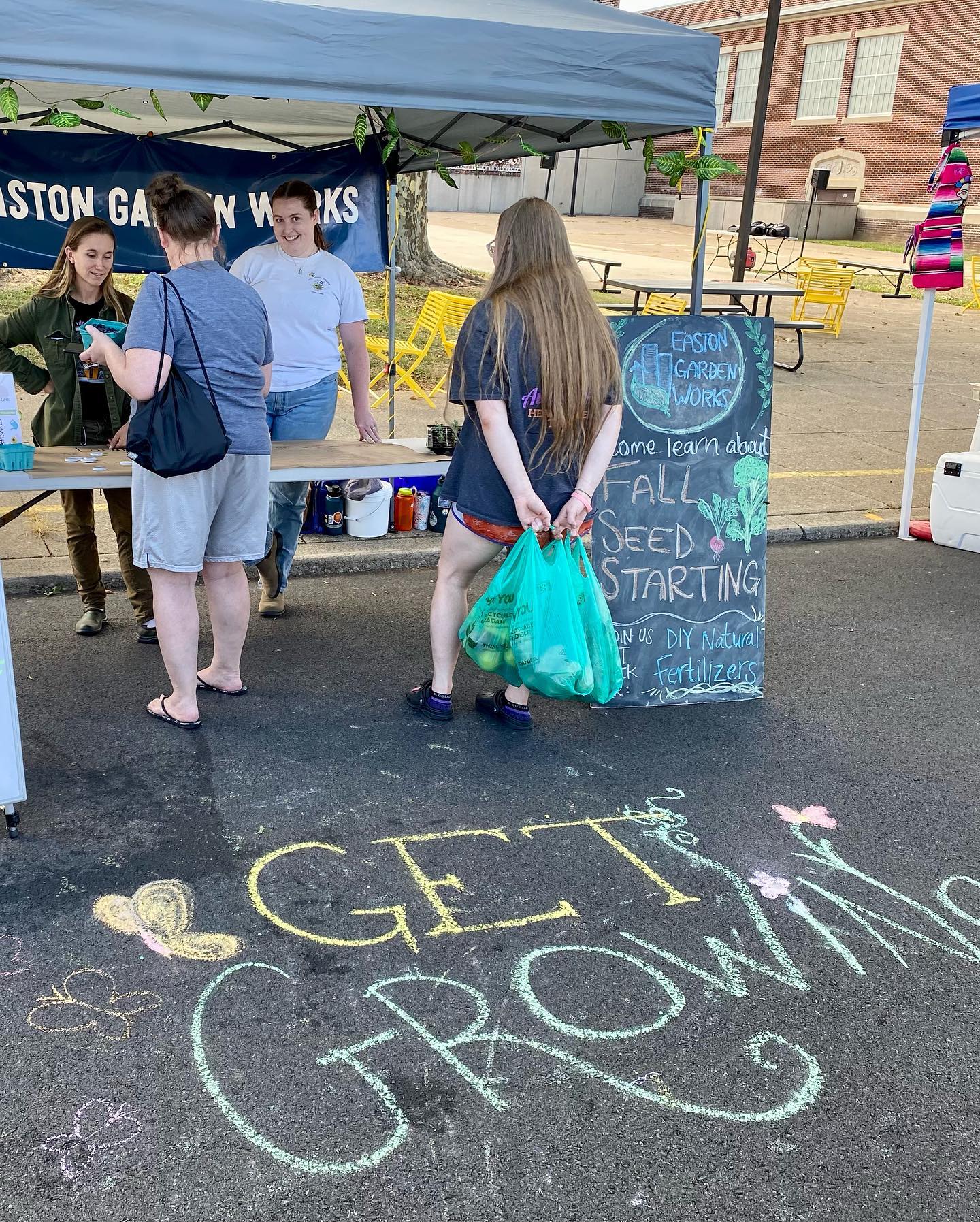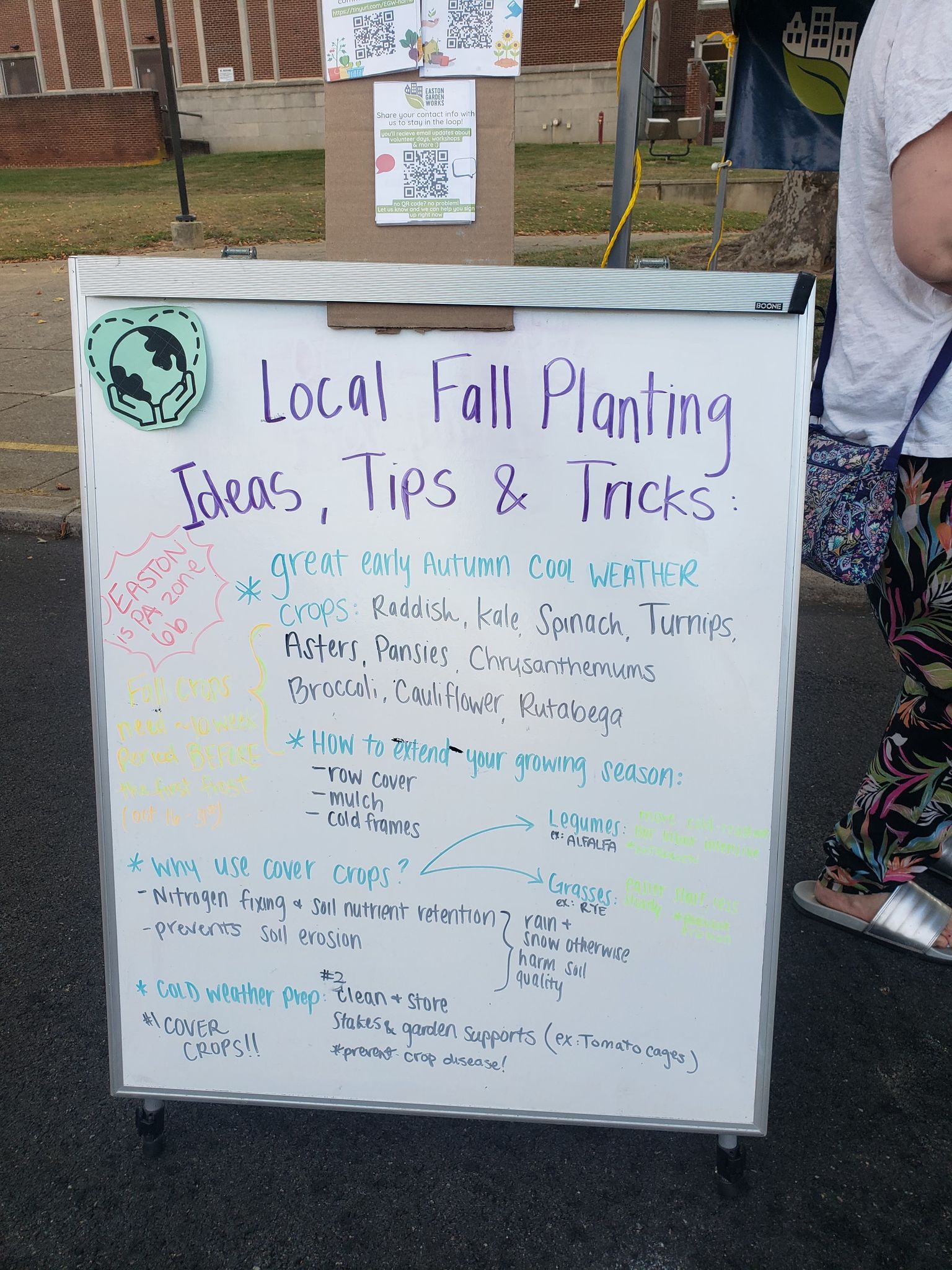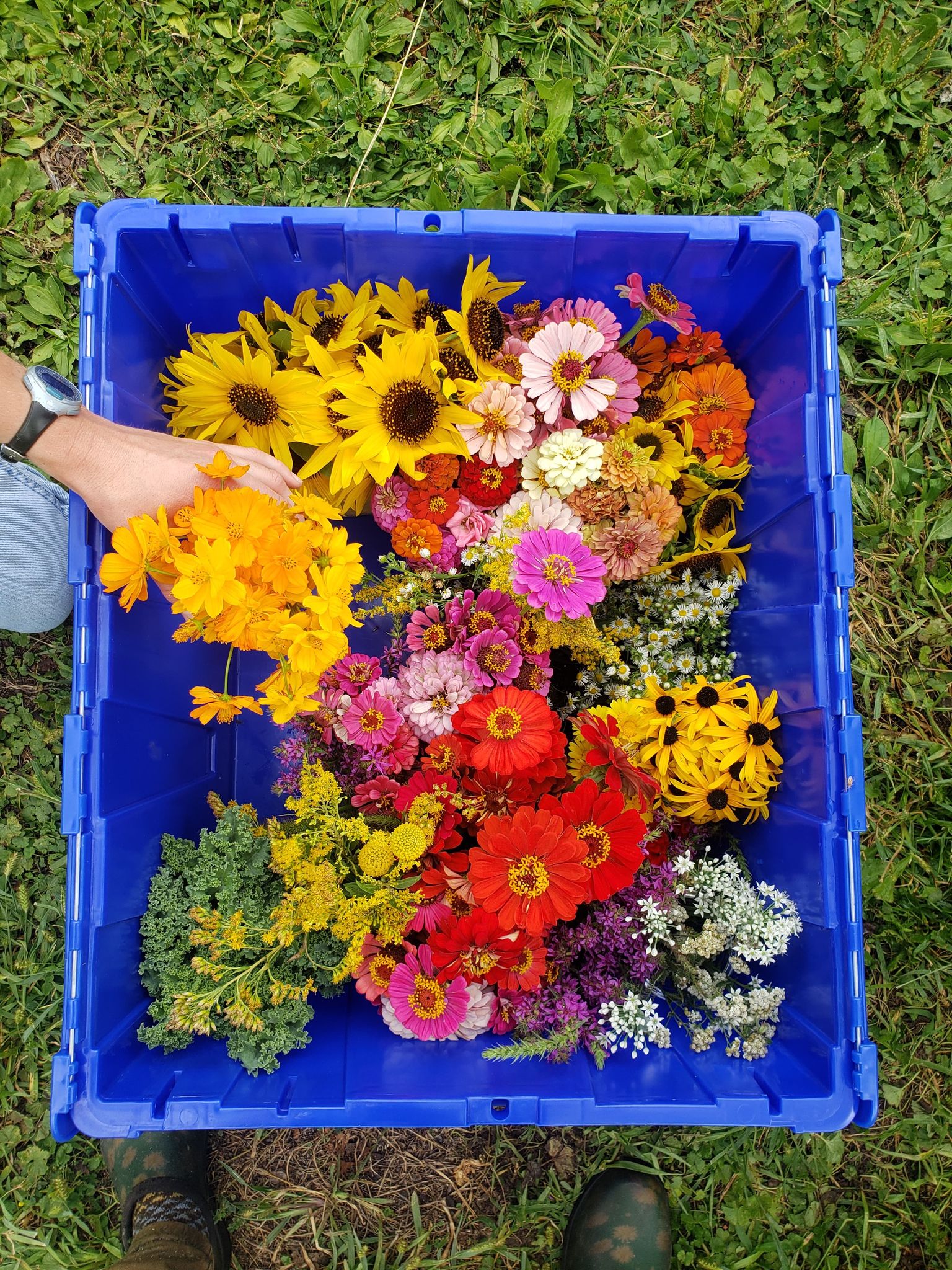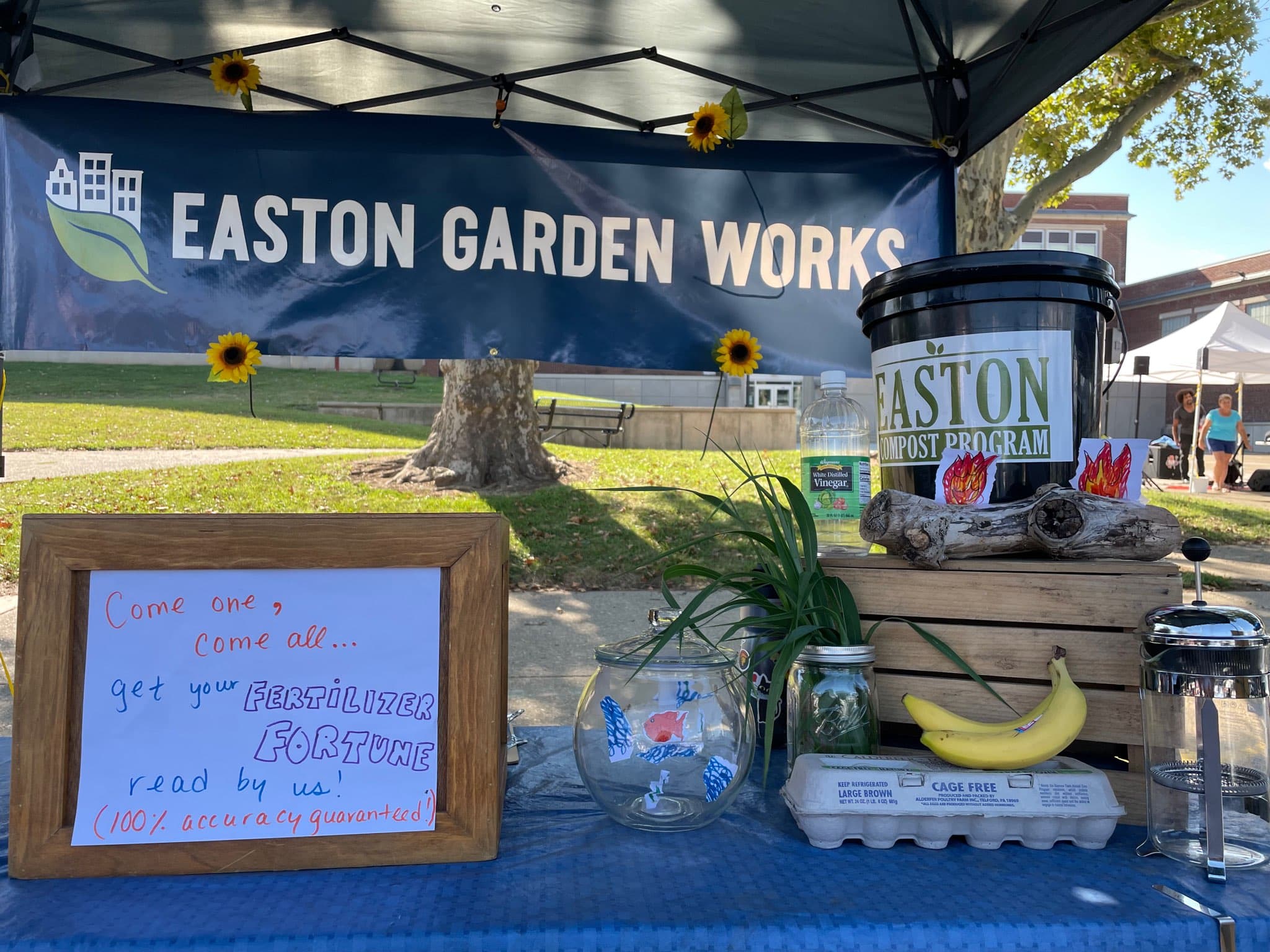West Ward Market Recap: August
Week 1: Compost 101
Composting: the process of breaking down food waste & nitrogen-rich refuse (“green” or “wet” materials) with “brown” carbon heavy dry materials to create rich soil full of nutrients and microbes. Healthy soil is crucial to thriving plant life and more. Add air circulation (turning the pile over with a pitchfork) and water, and it’ll heat up on its own to break down into this natural fertilizer.
The Easton Compost Program allows City residents to collect and tip their food scraps to divert waste from the landfill (and emissions related to it); or, you can compost in your own backyard. That week’s lesson included a sorting game to toss recyclables, food waste, and trash into the correct bins.
Week 2: Homemade spice blends kits
We spiced up the second week by drying and storing herbs. We strung up rosemary, oregano, mint, sage, thyme, lavender, and more. Participants had to identify by sight and smell which was which. Hang drying like we did can sometimes last a few weeks to completely dry out the herbs… and others will even keep a paper bag over the herbs as they hang, as light can affect the essential oils in them. Other methods? Oven drying or even microwaving.
Some added facts to the white board explained which herbs were easy to dry, and which heavy-water dense herbs (like cilantro or parsley) don’t dry well or maintain their flavor. Other cool facts too: like letting cilantro go to seed creates whole coriander spice which can be ground up. We gave away 50 free shaker spice jars for people to take home, dry their herbs, and make their own unique spice blends. Check out our example spice blend recipes below.
Week 3: Fall seed starting
Our climate is in zone 6b, which accommodates cool season plants but also gives heat-loving ones a shorter growing season. We made a board game style chart with the growing calendars of different crops here: like corn, broccoli, radishes, tomatoes, and more. Some were trick questions: cool weather plants like peas can be planted in the cool spring or in the fall, but might not do well in the heat of summer. So two cycles!
Winners that got a few correct were given high-fives, fall seed packets, and fall seedlings (kale, mustard greens, lettuce) generously donated by the Seed Farm. We also included when to start fall seeds if not planting them directly in the ground: check out this easy chart for a growing timeline.
Week 4: Flower crown workshop
Another Easton Garden Works’ signature flower crown workshops! Lots of zinnias, sunflowers, wildflowers, and weeds peppered everyone’s crowns this week. Even more was in bloom as compared to July: we had ornamental onion, kale, Mexican sunflower, okra flowers, and more to add to the mix.
Week 5: Natural fertilizers & fortune telling
In addition to our compost lesson from earlier this month, we had an array of other types of natural fertilizers to talk about. We had a very real and incredibly accurate fortune-telling game where we asked participants to choose a fertilizer type out of a hat, and learned about its application in the garden and in their futures. Some choices: compost, aquarium water, fireplace ashes, egg shells, diluted vinegar, Epsom salts, and coffee grounds. Certain ones are more acidic (vinegar), great for plants like blueberries, or full of nitrogen (aquarium water, for leafy growth), or magnesium (Epsom salts, for plant respiration); each has their own levels of micro or macronutrients. We see riches in your & your garden’s futures!


